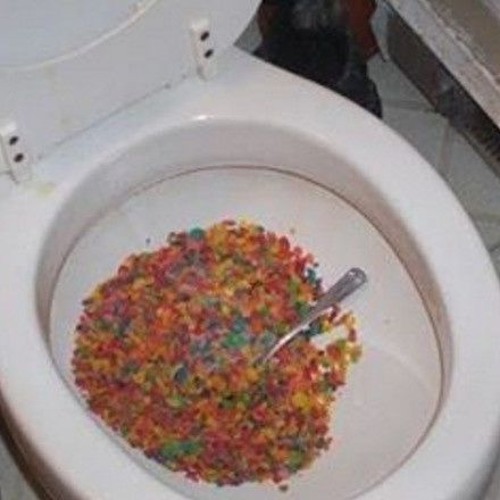Can One to Flush Food in the Toilet?
Can One to Flush Food in the Toilet?
Blog Article
What're your concepts about Flushing Food Down the Toilet??

Intro
Many people are typically faced with the predicament of what to do with food waste, particularly when it concerns leftovers or scraps. One usual question that develops is whether it's okay to flush food down the commode. In this article, we'll explore the reasons people may think about flushing food, the consequences of doing so, and alternative approaches for correct disposal.
Reasons people may take into consideration flushing food
Absence of awareness
Some people might not be aware of the possible harm brought on by purging food down the bathroom. They might mistakenly think that it's a harmless method.
Comfort
Purging food down the bathroom might look like a quick and easy service to dealing with unwanted scraps, especially when there's no close-by garbage can offered.
Laziness
Sometimes, people might just pick to flush food out of sheer laziness, without considering the effects of their actions.
Consequences of flushing food down the bathroom
Environmental effect
Food waste that winds up in rivers can contribute to contamination and injury marine ecosystems. Furthermore, the water utilized to flush food can stress water sources.
Plumbing issues
Flushing food can lead to blocked pipelines and drains, causing pricey pipes fixings and inconveniences.
Kinds of food that should not be purged
Coarse foods
Foods with fibrous appearances such as celery or corn husks can get entangled in pipes and create blockages.
Starchy foods
Starchy foods like pasta and rice can soak up water and swell, leading to obstructions in pipes.
Oils and fats
Greasy foods like bacon or cooking oils should never be flushed down the bathroom as they can solidify and create obstructions.
Correct disposal techniques for food waste
Utilizing a waste disposal unit
For homes geared up with waste disposal unit, food scraps can be ground up and purged via the pipes system. Nonetheless, not all foods appropriate for disposal in this manner.
Recycling
Certain food product packaging products can be recycled, reducing waste and minimizing ecological influence.
Composting
Composting is a green method to dispose of food waste. Organic materials can be composted and made use of to improve soil for horticulture.
The value of appropriate waste management
Lowering ecological harm
Correct waste management practices, such as composting and recycling, assistance minimize contamination and preserve natural resources for future generations.
Shielding pipes systems
By staying clear of the technique of flushing food down the commode, property owners can avoid costly pipes repairs and keep the stability of their plumbing systems.
Conclusion
To conclude, while it may be alluring to flush food down the bathroom for comfort, it is necessary to recognize the possible repercussions of this activity. By embracing appropriate waste management methods and taking care of food waste responsibly, individuals can add to much healthier plumbing systems and a cleaner setting for all.
FLUSH FOOD DOWN THE TOILET?
FLUSHING FOOD CAN CAUSE BLOCKED DRAINS IN YOUR HOME
All of the plumbing fixtures in your home are connected to the same sewer pipe outside of your home. This outdoor sewer pipe is responsible for transporting all the wastewater from your home to the Council sewer mains. Even small pieces of food that go down the kitchen sink can cause problems for your sewer. It should therefore be obvious that flushing larger bits of food, such as meat, risks a clog in either the toilet itself or the sewer pipes. Flushing greasy food is even more problematic because oil coagulates when it cools, coating the interior lining of your pipes.
THE TOILET IS NOT A BIN
Food isn’t the only thing that people shouldn’t be flushing down the toilet. People use the toilet to dispose of all kinds of things such as tampons, makeup wipes, dental floss, kitty litter and even underwear. Water goes to great lengths to educate residents about the high costs and stress placed on wastewater treatment systems simply from people flushing the wrong stuff down the toilet. It costs taxpayers millions of dollars each year, and homeowners thousands in blocked drain repairs.
FLUSHING FOOD IS A WASTE OF WATER
Flushing food is a waste of our most precious resource - water. In June this year Level 1 water restrictions were introduced to protect water supply from drought conditions. Much of New South Wales continues to be affected by prolonged drought with recent figures revealing up to 97 per cent of the state remains in drought. Depending on whether you have a single or dual flush toilet, every single flush uses between five and 11 litres of water. In the current climate this is a huge amount of water to be wasting on flushing food that should be placed in the bin (or better yet, the compost).
https://www.jabplumbingsolutions.com.au/blog/can-you-flush-food-down-the-toilet

As a keen reader on Is it safe to flush food (especially rice) down the toilet?, I imagined sharing that piece of content was worthwhile. Sharing is caring. You won't know, you will be helping someone out. Thanks for your time spent reading it.
Request An Estimate Report this page